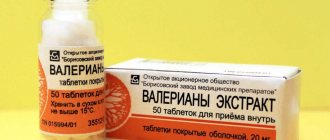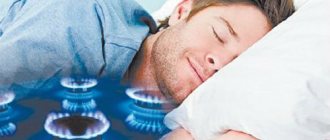Anonymously
Around the clock
Attention! The material contains information about substances, the use of which can cause serious harm to your health!
Article prepared by an expert
Terekhova Anna Vladimirovna
Psychologist-consultant on socio-psychological work with addicted clients and their families. Experience in the field of rehabilitation and social adaptation of persons with dependent behavior for more than 9 years.
Read in the article:
- What is baclofen
- Non-medical use
- Symptoms of using baclofen
- Health implications
- Addiction treatment
Among people who use psychoactive substances, the medical drug Baclofen is in demand. It is called a “cheap high” at an affordable price. Baclofen is prescribed to relieve pain; it has a calming effect after a stroke, atherosclerosis, and meningitis. The strong effect of the drug, its ability to cause euphoria, its prevalence in pharmacies and low cost have made Baclofen one of the most popular drugs among drug addicts.
Pharmacodynamics and pharmacokinetics
The active substance is a GABA stimulant, a derivative of gamma-aminobutyric acid. The mechanism of action is aimed at suppressing interneurons, reducing the excitability of the terminal sections of sensory afferent fibers, and suppressing monosynaptic and polysynaptic transmission of nerve impulses, which leads to a decrease in the preliminary tension of muscle tissue.
The drug Baclofen does not affect neuromuscular transmission . The medication is able to facilitate active and passive kinesitherapy , increase the range of motion in joints, weaken clonic convulsions and painful spasms in neurological diseases, which are manifested by spasticity of skeletal muscles.
Health implications
In addition to causing severe harm to physical and mental health, Baclofen is also a common cause of overdose. The effect of the drug occurs when a person has drank in excess of the psychoactive substance. Often an overdose ends in depression of respiratory function and asphyxia, which leads to death. While taking the drug, the addict develops manic-depressive syndrome.
In case of an overdose of Baclofen, you must urgently call an ambulance. Otherwise, death is inevitable.
Contraindications
Baclofen is not used for Parkinson's disease, psychosis, a history of seizures, epilepsy, intolerance to the main substance, cerebral atherosclerosis , or chronic renal failure.
During pregnancy, ulcerative lesions of the digestive tract, cerebrovascular insufficiency, breastfeeding , children under 12 years of age and the elderly, Baclofen is prescribed with caution.
Addiction treatment
The use of pharmaceutical drugs together with other psychoactive substances (alcohol, drugs) is dangerous for the development of polydrug addiction, which is much more difficult to treat. In case of an overdose, an addict needs immediate medical attention.
Detoxification. It is carried out with the aim of cleansing the body of psychoactive substances. It is carried out with the help of special medications.
Medical and social rehabilitation. This stage plays a significant role in pharmaceutical drug addiction, including baclofen. Because people addicted to baclofen often mix this drug with others, the addict requires longer treatment.
Social and psychological rehabilitation is carried out in a hospital (rehabilitation center). Narcologists, psychologists, and chemical dependency counselors work with the patient. The task of specialists is to overcome harmful cravings, understand the causes of addiction and learn to live without drugs and alcohol.
Social adaptation. Strengthening motivation and preventing breakdowns. A person is taught to live soberly. Help restore social status.
Baclofen addiction often leads to death because it suppresses a person’s psycho-emotional state, leads to suicidal thoughts, and also has a serious impact on physical health.
If you care about a loved one, help him return to life without stimulants! Make an appointment with a narcologist by calling the hotline of the professional treatment and rehabilitation center “Zdravnitsa” 8-800-200-27-23.
Side effects
Baclofen causes asthenia , dizziness, drowsiness, vomiting, nausea, paresthesia, drop in blood pressure , constipation , diarrhea, urinary retention, gait disturbances, confusion , ataxia, myasthenia , myalgia, depression, euphoria, apathy , enuresis, dysuria, hallucinations , accommodation paresis , nystagmus, decreased seizure threshold, convulsions.
Long-term therapy causes disturbances in the functioning of the hepatic system.
Symptoms of using Baclofen
The substances contained in the drug have a powerful effect on humans. Often, to achieve the strongest effect, people take 5-10 tablets at once, washed down with alcohol. Within half an hour a person begins to show the first signs of intoxication:
- Severe vomiting.
- Dry mouth.
- Visual and auditory hallucinations.
- Tremor of the limbs.
- Drowsiness.
- Terrible apathy.
- Pupil enlargement.
- Speech problem.
- Dizziness.
- Problem with coordination of movements.
Addicts often dilute Baclofen with amphetamine. This makes it possible to divide one dose of a psychoactive substance into several.
After taking Baclofen, addicts experience a unique feeling of euphoria, a surge of strength and pronounced auditory hallucinations.
Baclofen tablets, instructions for use (Method and dosage)
The drug is taken orally before meals.
The initial dosage is 5 mg three times a day, then every three days the dose of Baclofen is increased by 5 mg to achieve a therapeutic effect. The maximum dosage for adults is 100 mg per day under inpatient supervision.
The final dosage is selected taking into account such a decrease in muscle tone that will not impair motor function or lead to excessive myasthenia gravis.
Persons with hypersensitivity are prescribed 5-10 mg per day with a possible subsequent dose increase.
When carrying out hemodialysis, for chronic renal failure, the daily dosage is 5 mg.
Baclofen is discontinued gradually over 1-2 weeks.
Instructions for use of Baclofen by children
At the age of one to two years, 10-20 mg of the substance is prescribed per day, for two to six years - 20-30 mg per 24 hours, for six to ten years - 30-60 mg per day. At the age of over ten years, the maximum dose is 1.5–2 mg per 1 kg.
Baclofen
Baclofen
(lat.
baclofen
) is a muscle relaxant, antispastic medicine.
Baclofen is a chemical compound
Baclofen is a white or almost white crystalline powder, almost odorless. Slightly soluble in water, very slightly soluble in methanol and insoluble in chloroform. Chemical name of baclofen: (RS)-4-amino-3-(4-chlorophenyl)butanoic acid. Empirical formula: C10H12Cl NO2.
Baclofen is a medicine
Baclofen is the international nonproprietary name (INN) of the drug. According to the pharmacological index, baclofen belongs to the group “Neurotropic drugs”, the subgroup “Drugs affecting neuromuscular transmission”. According to ATC, baclofen is included in the group “M03. Muscle relaxants" and has the code M03BX01. Baclofen ® is also the trade name of the drug.
Indications for use of baclofen
Baclofen is used for spastic muscle conditions in multiple sclerosis, strokes, traumatic brain injury, spinal cord lesions, strokes, cerebral palsy, meningitis, inflammation of the meninges.
Baclofen in gastroenterology
Baclofen, being an agonist of γ-aminobutyric acid (GABA) - GABA-B receptors, is a drug that affects the severity of GERD symptoms, the mechanism of action of which is due to the inhibition of transient relaxations (spontaneous relaxations) of the lower esophageal sphincter (LES) - reducing their frequency and duration .
Taking baclofen 5–10 mg 4 times a day for 4 weeks is accompanied by a decrease in the severity and frequency of symptoms of both erosive and non-erosive esophageal reflux disease. Baclofen (as well as other drugs that are not yet available in Russia, cholecystokinin-A antagonists and NO synthetase inhibitors: dexloxiglumide, devazepid, asperlicin; all of these drugs can be classified as modern prokinetics) improves motility of the upper gastrointestinal tract, including by inhibiting spontaneous relaxations of the LES ( Starostin B.D., Starostina G.A.). Baclofen, which inhibits short-term relaxation of the LES, reduces both the number of episodes of acid and non-acid reflux and the frequency of symptoms that occur after eating. In addition, baclofen reduces acid reflux and significantly reduces the severity of symptoms. However, due to side effects on the central nervous system, baclofen is not acceptable for all patients in whom it could have an effect (Neeraj Sharma et al). Baclofen is the only drug that reduces the number of transient relaxations of the LES and thus reduces the number of reflux episodes. In experimental studies, baclofen shows good results. However, its therapeutic band is very narrow and baclofen has not found use in gastroenterology (Trukhmanov A.S.).
Baclofen is not recommended for stomach and/or duodenal ulcers.
As a GABA-B receptor agonist, baclofen not only reduces the number of transient LES relaxations (TRNSR) in both animals and humans, but also reduces the number of episodes of acid and weak acid reflux in healthy volunteers and in patients suffering from GERD. Given that baclofen therapy can provoke the development of dizziness and drowsiness, in order to avoid GABA-mediated side effects from the central nervous system (CNS), more powerful peripherally acting GABA-B receptor agonists, or baclofen prodrugs, have been developed: arbaclofen and lezogaberan . But, unfortunately, although these drugs reduce the number of PRNPS by approximately 30–40%, their low clinical effectiveness and side effects (hepatotoxicity, side effects from the central nervous system) led to the cessation of their use in clinical practice, as well as to the cessation of the development of new reflux inhibitors (Kahrilas PJ and others).
About 15 years ago, references appeared in the literature about the ability of the GABA(B) receptor agonist baclofen to reduce the number of spontaneous relaxations of the LES in patients with GERD. A meta-analysis of 5 controlled studies showed that the use of baclofen reduces the number of episodes of spontaneous relaxation of the LES and the duration of decrease in esophageal pH. However, baclofen was never introduced into widespread clinical practice, since its use is limited by such serious neurological side effects as dizziness and confusion (Sheptulin A.A. et al.).
Baclofen is used to treat patients who have a positive relationship between symptoms of GERD (heartburn or regurgitation) and normal levels of non-acid reflux (pH 4.0-6.5). It is prescribed to patients with a similar pathology at a starting dose of 5 mg three times a day, with a possible dose increase to 20 mg three times a day. Baclofen significantly reduces symptoms, reduces postprandial acid and non-acid (duodenogastroesophageal) reflux, recorded using impedance pH-metry (Pasechnikov V.D.).
Materials for healthcare professionals regarding the use of baclofen in gastroenterology
Literature
- Stepanov Yu.M., Arbi Mohamed. The effectiveness of baclofen in the treatment of GERD refractory to antisecretory therapy // RZHGGK. - 2010. - T.20. - No. 5. - Adj. No. 36. — P.159.
- Starostin B.D., Starostina G.A. GABAb receptor agonists for GERD // Gastroenterology of St. Petersburg. - 2011. - No. 2-3. - With. M86.
- Ciccaglione AF, Marzio L. Effect of acute and chronic administration of the GABAB agonist baclofen on 24 hour pH metry and symptoms in control subjects and in patients with gastro-oesophageal reflux disease // BMJ Publishing Group & BSG. 2003;52:464-470.
On the website in the “Literature” section there are subsections “Prokinetics-stimulants of gastrointestinal motility” and “Anspasmodics”, containing publications for healthcare professionals addressing the use of prokinetics and antispasmodics in the treatment of diseases of the gastrointestinal tract.
Video
Still from the video with simultaneous translation into Russian: Bisschops R. European standards for the diagnosis and treatment of erosive and non-erosive esophagitis
On the website in the “Video” section there is a subsection for patients “Popular Gastroenterology” and a subsection “For Doctors”, containing video recordings of reports, lectures, webinars in various areas of gastroenterology for healthcare professionals.
How to take baclofen and dosage
Baclofen is taken orally.
Adults at the beginning of treatment: 5 mg of baclofen 3 times a day. On every fourth day of therapy, the single dose is increased by 5 mg until the optimal therapeutic effect is obtained. The average daily dose is 30–75 mg; if necessary, it can be increased to 100–120 mg. The final daily dose of baclofen is set individually so that, along with the weakening of clonus and muscle spasm, muscle tone is maintained sufficient for active movements. For patients with hypersensitivity to drugs, the initial dose may be 5-10 mg of baclofen per day, followed by a slower increase. For patients with renal failure, as well as with hemodialysis, the dose of baclofen is 5 mg per day. For children under 10 years of age, the daily dose is 0.75–2 mg per kg of weight, over 10 years of age - 2.5 mg per kg of weight. Treatment begins with a dose of 2.5 mg 4 times a day. The daily dose, as in adults, is selected individually, increasing it every three days. The maintenance daily dose for children 1-2 years old is 10-20 mg, for children 2-10 years old - 30-60 mg.
Special instructions for treatment with baclofen
It is recommended to select an individual dose in a hospital setting.
Side effects usually disappear or decrease as the dose is reduced. There is rarely a need to discontinue treatment with baclofen. Side effects of baclofen should be distinguished from the symptoms of the disease for which therapy is being administered. Baclofen is discontinued gradually, reducing the dose over 1–2 weeks, unless serious side effects occur.
Baclofen is used with caution in cerebrovascular disorders, psychotic conditions, schizophrenia, respiratory disorders, liver and kidney dysfunction, as well as in older patients. With concomitant epilepsy, treatment is carried out under strict medical supervision and without interrupting adequate therapy with anticonvulsants. Patients with dysuria treated with baclofen may experience bladder sphincter hypertonicity and urinary retention. In patients with liver disease and diabetes mellitus, it is necessary to monitor the level of liver transaminases, alkaline phosphatase and blood sugar.
During therapy with baclofen, you should refrain from potentially hazardous activities that require increased attention and rapid psychomotor reactions, including driving.
Restrictions on the use of baclofen
- stomach ulcer
- duodenal ulcer
- renal dysfunction
- age up to 12 years
Use of baclofen during pregnancy, lactation and in infants
The use of baclofen during pregnancy is possible only if the expected effect of therapy outweighs the potential risk to the fetus. Baclofen has an FDA Fetal Category of C (animal studies have shown adverse effects on the fetus and there have been no adequate studies in pregnant women, but the potential benefit associated with the use of this drug in pregnant women may justify its use despite existing risk). Breastfeeding is discontinued while taking baclofen and can be resumed after stopping taking baclofen. Baclofen is not prescribed for children under 12 years of age.
Side effects of baclofen
Nervous system and sensory organs:
drowsiness, insomnia, dizziness, headache, weakness, fatigue, confusion, imbalance, decreased reaction speed, mental agitation, euphoria, hallucinations, depression, nightmares.
Cardiovascular system:
arterial hypotension, palpitations, chest pain, collapse.
Digestive system:
aversion to food, perversion of taste, nausea, vomiting, constipation, dyspeptic symptoms, abdominal pain.
Genitourinary system:
involuntary urination, enuresis, urinary retention, anuria, hematuria, impotence, ejaculation disorders.
Respiratory system:
feeling of nasal congestion and suffocation, respiratory depression.
Others
: muscle pain, skin rash, itching, swelling of the feet, sweating, weight gain, paradoxical reaction.
Pharmacodynamics of baclofen
Baclofen is quickly and completely absorbed from the gastrointestinal tract. Cmax in blood plasma is achieved 2–3 hours after administration. Plasma protein binding of baclofen is approximately 30%. Penetrates the placental barrier and is excreted in breast milk. Baclofen is metabolized in the liver. It is excreted in the urine, mainly unchanged.
Brands of medicines containing the active ingredient baclofen
Currently, two drugs with the active ingredient baclofen are registered in Russia: Baklosan ® and Lioresal ® intrathecal. The trademark Baclofen ® was also previously registered. Brands with the active ingredient baclofen sold in Western countries: Kemstro ®, Lioresal ®.
Instructions for use of baclofen
For Russia (in Russian, pdf):
- Instructions from the manufacturer Pharmaceutical JSC, Poland (pdf): “Instructions for medical use of the drug Baklosan”, tablets 10 and 25 mg.
- Instructions from the manufacturer Novartis Pharma Stein AG, Switzerland, “Instructions for medical use of the drug Lioresal Intrathecal”, solution for intrathecal administration.
For the USA (in English, pdf):
- "Lioresal Intrathecal (baclofen injection)", manufacturer Novartis Pharma Stein AG, Stein, Switzerland
Baclofen has contraindications, side effects and application features; consultation with a specialist is necessary. Back to section
special instructions
Side effects of Baclofen may be transient. It is important to be able to distinguish side effects from signs of the underlying disease.
For patients with epilepsy, the drug is prescribed without concomitant withdrawal of antiepileptic drugs.
In case of diabetes mellitus , pathologies of the liver system, regular monitoring of blood sugar levels and the activity of liver enzymes is carried out.
Baclofen affects concentration and driving.
Non-medical use
The drug Baclofen was invented in Switzerland in the mid-20th century. Initially used for people suffering from epilepsy and various disorders after a stroke. After proven effectiveness, the drug began to be prescribed to people with traumatic brain injury, muscle problems, and tumors.
Baclofen was used orally, but then the drug was injected into the spinal cord. This was able to achieve an effect in the treatment of severe static disease, multiple sclerosis, and brain damage: spinal and brain.
Analogs
Level 4 ATC code matches: Tizanil
Tizanidine
Tolperisone-OBL
Tizalud
Mydocalm-Richter
Mydocalm
Baklosan
Sirdalud
Lioresal , Baklosan .
Pharmacokinetics
Suction
After oral administration, baclofen is quickly and completely absorbed from the gastrointestinal tract. Cmax in blood plasma is achieved 2-3 hours after taking the drug.
Distribution
Plasma protein binding is about 30%. Baclofen penetrates the placental barrier and is excreted in breast milk.
Metabolism
Metabolized in the liver.
Removal
It is excreted in the urine, mainly unchanged.
Reviews of Baclofen
An effective drug to combat muscle stiffness. Quickly relaxes stiff muscles, eliminates clonic convulsions and spasms.
Reviews of Baclofen often mention side effects of the drug, such as nausea and vomiting.
The medication can also cause drug addiction, the consequences of which can be very sad, even death. Addicts typically consume large amounts of this drug, experiencing severe side effects, in an attempt to achieve the desired psychedelic state. Baclofen in large dosages “rushes” or causes a so-called “trip”, which can result in a dropper or death.
Dependence on this type of substance is very dangerous, since quitting drugs is always more difficult than starting.
What is Baclofen
Initially, Baclofen was proposed as a powerful muscle relaxant, which was prescribed to patients with epilepsy. The synthesized drug was administered orally, but the study revealed that the intrathecal method of administration allows for a stronger and more sustainable effect. Moreover, this method did not cause side effects, which often appeared with oral administration.
Narcologists noted that contactless administration of the drug provokes a state of euphoria, which can be compared to the effect of Butyrate or MDMA (a psychoactive substance). Addicts use Baclofen as an enhancer of the effects of amphetamine drugs, marijuana and alcohol. This combination makes the addict fearless, causes euphoria and a feeling that the person has superpowers. As a result, after just a few doses of the drug, a person develops a persistent psychological dependence.
Since the drug provokes rapid addiction, the usual dose soon becomes insufficient for the addict. The amount of the drug increases, which inevitably leads to an overdose. Over time, the state of former euphoria and happiness gives way to depression and decadent moods. When taking a psychoactive substance, swelling and pain in the kidneys and pancreas appear. The person is forced to reduce the dose or stop using the drug, which entails withdrawal syndrome.
Baclofen is quickly eliminated from the body. This leads to severe withdrawal syndrome. However, in addition to refusing the drug, withdrawal syndrome can also be triggered by the usual adherence to the time of administration (when the body has already been cleansed from the first dose, and the second portion of the medicine has not yet been consumed). More often, withdrawal begins in the morning.
Baclofen price, where to buy
The price of Baclofen in 25 mg tablets costs 380 rubles per pack of 50 pieces.
- Online pharmacies in UkraineUkraine
Pharmacy24
- Baclofen 25 mg No. 50 tablets Pharmaceutical plant "POLFARMA" S.A., Poland
214 UAH. order - Baclofen 10 mg N50 tablets Pharmaceutical plant "POLFARMA" S.A., Poland
122 UAH order
Release form, composition and packaging
Pills
white, round, biconvex, with a dividing line.
| 1 tab. | |
| baclofen | 10 mg |
Excipients:
lactose, potato starch, gelatin, talc, magnesium stearate, ethylcellulose.
50 pcs. - polypropylene cans (1) - cardboard packs.
Pills
white, round, biconvex.
| 1 tab. | |
| baclofen | 25 mg |
Excipients:
lactose, potato starch, gelatin, talc, magnesium stearate, ethylcellulose.
50 pcs. - polypropylene cans (1) - cardboard packs.
Overdose of the drug Baclofen
Acute Baclofen intoxication may be accompanied by insomnia, loss of consciousness, coma, and breathing problems. Dizziness, hallucinations, anxiety, impaired accommodation, loss of pupillary reflex, muscle hypotonia, clonic convulsions, hyporeflexia or areflexia, convulsions, peripheral vasodilation, bradycardia, decreased body temperature, nausea, vomiting, diarrhea, hypersalivation, increased levels of LDH, ALT may also develop. and AST. Treatment: it is necessary to rinse the stomach and take activated charcoal. If necessary, use saline laxatives. Patients who are in a comatose state must be intubated before gastric lavage. Measures are taken to maintain the functions of the respiratory and cardiovascular systems. There is no specific antidote. In cases of mild intoxication, physostigmine is administered intravenously to eliminate adverse effects from the central nervous system, especially insomnia and respiratory depression. To enhance the removal of baclofen from the body, forced diuresis is used. For convulsions, careful intravenous administration of diazepam is indicated.
Drug interactions Baclofen
When Baclofen is used simultaneously with drugs that affect the central nervous system and alcohol, the sedative effect may be enhanced; with lithium salts - increased hyperkinetic symptoms; with tricyclic antidepressants - increased effect of baclofen with a significant decrease in muscle tone; with antihypertensive drugs - increased hypotensive effect (dose adjustment may be required); with drugs the use of which can lead to renal failure (for example, ibuprofen), the elimination of baclofen is slowed down and its toxic effects may increase; with levodopa, carbidopa - patients with Parkinson's disease may experience confusion, hallucinations and increased excitability; with fentanyl - the analgesic effect of the latter is prolonged.










